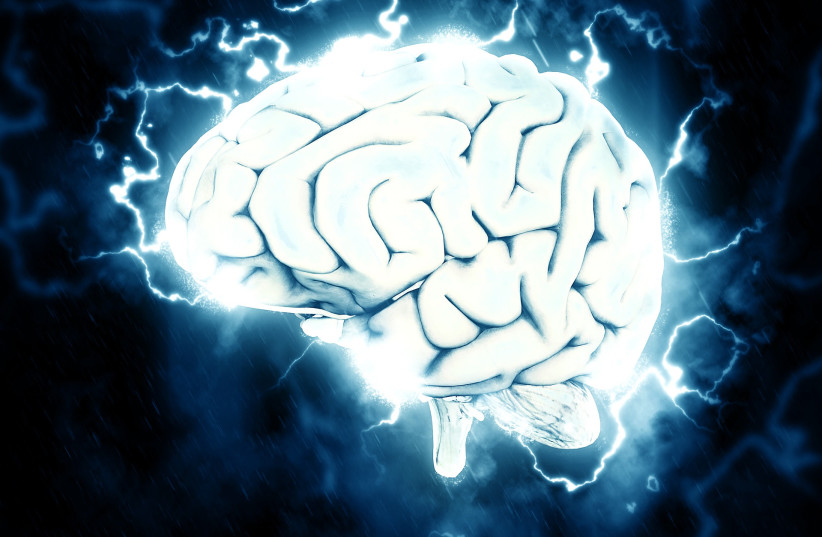New study may explain bright light, familiar faces in near death experiences
Scientists observed that parts of the brain in charge of internal visual experience have increased activity at the moment of cardiac arrest.
By JERUSALEM POST STAFF, MAY 3, 2023
A sudden increase in brain activity at the moment of cardiac arrest
may be what causes people to see a bright white light while experiencing
near-death experiences, according to a new study published on Monday.
The study, which was published in the peer-reviewed Proceedings of the National Academy of Science journal, examined the brain activity of four dying patients.
Between
10 and 20% of people who survive near-death experiences tend to
describe the moment as a bright light or say that they saw dead loved
ones among other visual experiences. Many people look on this
skeptically, but the new study may have found a scientific explanation
for this phenomenon.
A sudden increase in brain activity at the moment of cardiac arrest may be what causes people to see a bright white light while experiencing near-death experiences, according to a new study published on Monday.
The study, which was published in the peer-reviewed Proceedings of the National Academy of Science journal, examined the brain activity of four dying patients.
Between 10 and 20% of people who survive near-death experiences tend to describe the moment as a bright light or say that they saw dead loved ones among other visual experiences. Many people look on this skeptically, but the new study may have found a scientific explanation for this phenomenon.
What did the researcher see in dying people's brains?
Using
EEG, the researchers observed that cardiac arrest or acute asphyxia led
to high levels of gamma activities in the brain among both humans and
animals. Gamma power in the brain is an indicator of consciousness and
tends to be associated with intense focus, problem-solving and other
brain activity that requires mind power.
Specifically, the activated areas of the brain that the scientists
observed among dying patients are similar to the areas of the brain that
handle internal visual activity like dreaming.
This could explain the bright light or faces of loved ones. While the
patients are not seeing these images actually materialize in front of
them, they are essentially dreaming them as they pass away.
 The brain (illustrative). (credit: PIXABAY)
The brain (illustrative). (credit: PIXABAY)Two of the four patients observed in the study exhibited the increased brain activity
while the other two did not. This could explain why only 10 to 20% of
near-death experience survivors report visual experiences. The study did
not, however, examine what caused this phenomenon among some people
more than others.
Dr.
Jimo Borjigin, who led the study, told New Scientist that if the two
patients that had increased brain activity had survived, they "might
have had some story to tell."
"How vivid experience can emerge from a dysfunctional brain during
the process of dying is a neuroscientific paradox," said Dr. George
Mashour to the Daily Record. "Dr. Borjigin has led an important study
that helps shed light on the underlying neurophysiologic mechanisms."
"Dr. Borjigin has led an important study that helps shed light on the underlying neurophysiologic mechanisms."
Dr. George Mashour
The
researchers emphasized that their findings were not conclusive because
they could not ask the subjects what they had seen when the increased
brain activity had been noted.
In
order to make more grounded conclusions, they would need to observe the
brain activity of patients who survive near-death experiences and can
recount what they saw in the moment of cardiac arrest.
THIS PAGE WAS POSTED BY SPUTNIK ONE OF THE SPUTNIKS ORBIT BLOG
PLEASE RECOMMEND THIS PAGE AND FOLLOW US AT
Using EEG, the researchers observed that cardiac arrest or acute asphyxia led to high levels of gamma activities in the brain among both humans and animals. Gamma power in the brain is an indicator of consciousness and tends to be associated with intense focus, problem-solving and other brain activity that requires mind power.
Specifically, the activated areas of the brain that the scientists observed among dying patients are similar to the areas of the brain that handle internal visual activity like dreaming. This could explain the bright light or faces of loved ones. While the patients are not seeing these images actually materialize in front of them, they are essentially dreaming them as they pass away.
 The brain (illustrative). (credit: PIXABAY)
The brain (illustrative). (credit: PIXABAY)Two of the four patients observed in the study exhibited the increased brain activity while the other two did not. This could explain why only 10 to 20% of near-death experience survivors report visual experiences. The study did not, however, examine what caused this phenomenon among some people more than others.
Dr. Jimo Borjigin, who led the study, told New Scientist that if the two patients that had increased brain activity had survived, they "might have had some story to tell."
"How vivid experience can emerge from a dysfunctional brain during the process of dying is a neuroscientific paradox," said Dr. George Mashour to the Daily Record. "Dr. Borjigin has led an important study that helps shed light on the underlying neurophysiologic mechanisms."
"Dr. Borjigin has led an important study that helps shed light on the underlying neurophysiologic mechanisms."
Dr. George Mashour
The researchers emphasized that their findings were not conclusive because they could not ask the subjects what they had seen when the increased brain activity had been noted.
In order to make more grounded conclusions, they would need to observe the brain activity of patients who survive near-death experiences and can recount what they saw in the moment of cardiac arrest.
THIS PAGE WAS POSTED BY SPUTNIK ONE OF THE SPUTNIKS ORBIT BLOG


No comments:
Post a Comment
Stick to the subject, NO religion, or Party politics